 |
| Aristotle |
A Brief History Concerning Evolutionary Thought
Darwin's idea of descent with modification actually has deep historical roots.
Long before Darwin was born, many Greek philosophers suggested that life might have changed gradually over time.
But Aristotle viewed species as fixed, and his opinion influenced much of Western science.
During his observations of nature, Aristotle recognized certain affinities among organisms. He decided that life-forms might possibly be arranged on a type of ladder or scale of increasing complexity, later called scala naturae ("scale of nature"). Each life form is perfect and permanent and has an allotted rung on the ladder. (fig 1)
 |
| figure 1 |
Aristotle's ideas were mostly consistent with the Old Testament account of creation. In the 1700s, scientists would interpret the remarkable match of each organism to its specific environment as evidence of design and a creator, with each species having a specific purpose.
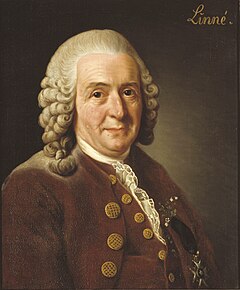 |
| Linnaeus |
Linnaeus did not attribute the resemblances among species to evolutionary kinship, but rather to the pattern of their creation.
Nearly a century later, Darwin argued that classification should be based instead on evolutionary relationships.
Why did Darwin suggest this?
Darwin drew from the work of scientists studying fossils in the new field of Paleontology, developed largely by French scientist Georges Curvier in the 1700-1800s. While examining the layers of the earth near Paris, Curvier noticed that the older the stratum of earth, the more dissimilar its fossils were to current life-forms. Additionally, he discovered that from one layer to the next, some new species appeared while other disappeared. He inferred that extinctions are probably a common occurrence in the history of life.
In 1795, Scottish geologist James Hutton proposed that Earth's geologic features could be explained by gradual mechanisms still operating today. For example, valleys may be formed by rivers wearing through rocks and sediment - such as the Grand Canyon.

How did all of this impact Darwin and his creation of evolutionary theory?
Darwin agreed that if geologic change results from slow, continuous actions rather than sudden events, then earth must be much, much older than the widely accepted age at the time of a few thousand years. He then reasoned that perhaps similarly slow and subtle processes could produce substantial biological change. Darwin was not the first to apply this idea of gradualism to evolution, however.
During the 18th century, multiple naturalists (including Darwin's grandfather, Erasmus Darwin) suggested that life changes in response to environmental change. But only one of Charles Darwin's predecessors proposed a mechanism for how life changes over time: French biologist Jean Baptiste de Lamarck.
In 1809, the year Charles Darwin was born, Lamarck published his hypothesis. He compared living species with fossil forms and found what appeared to be several lines of descent, each in a flawless chronological series of older to younger fossils culminating with a currently living species. He explained these findings using two principles that were widely accepted at the time:
- use and disuse; the idea that parts of the body that are used extensively become larger and stronger while those that are not used deteriorate (vestigial organs)
Examples:
 |
| pelvic bones in whales |
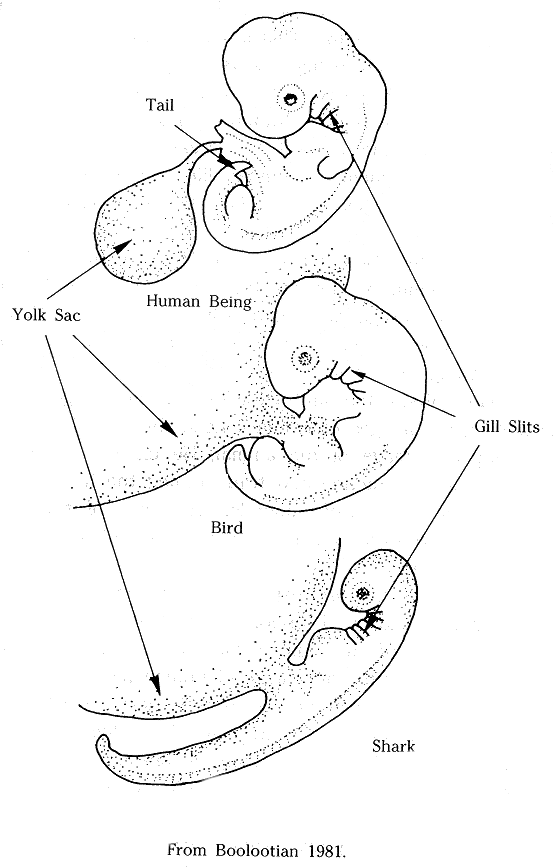 |
| gills in human and bird fetuses |
 |
| the appendix in humans |
- inheritance of acquired characteristics; an organism can pass these modifications along to its offspring (through what we now know is DNA - genetic code/instructions for life)
 |
| DNA |
Darwin's Beginnings
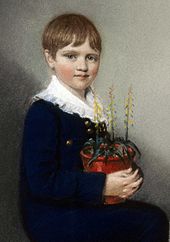 Darwin was born in 1809 in England. As a boy, he had a consuming interest in nature. When not reading nature books, he was fishing, hunting, and collecting insects. Darwin's father, a physician, sent his son to medical school in Edinburgh. But Charles found medicine boring and surgery horrifying and transferred to Cambridge University, intending to become a clergyman.
Darwin was born in 1809 in England. As a boy, he had a consuming interest in nature. When not reading nature books, he was fishing, hunting, and collecting insects. Darwin's father, a physician, sent his son to medical school in Edinburgh. But Charles found medicine boring and surgery horrifying and transferred to Cambridge University, intending to become a clergyman.While at Cambridge, Darwin became the protege of the Reverend John Henslow, a botany professor. After Darwin graduated, Henslow recommended him to Captain Robert FitzRoy, who was preparing the survey ship the HMS Beagle for a long voyage around the world.
The Voyage of the Beagle
In December 1831, Darwin embarked on the Beagle with the primary mission being a voyage to chart poorly known stretches of the South American coastline. While the crew surveyed the coast, Darwin spent most of his time on shore, observing and collecting thousands upon thousands of South American plants and animals. He noticed the characteristics of plants and animals that made them well suited to each diverse environment.
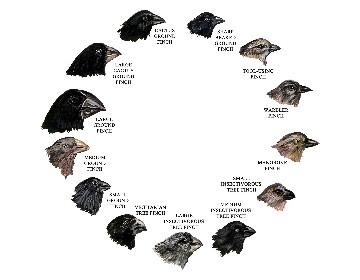
His most well-known work is his study of the finches of the islands he visited who trace their origins to South America. Further discussion of Darwin's finches will be covered in a later post.
Darwin's Focus on Adaptation
Darwin proposed the mechanism of natural selection to explain the observable patterns of evolution he found on his voyage. He related it to artificial selection, the process by which humans have sculpted crops, livestock, and pets so that the possess desired traits.
Examples of micro-evolution in artificial selection:
 |
| Dog breeding |
 |
| artificially selected for different characteristics; produces different varieties and eventually species |
Darwin argued that a similar process occurs in nature. He based this argument on two observations, from which he then drew two inferences.
Observation #1: Members of a population often vary in their inherited traits
 |
| variety of beetle phenotypes |
 |
| the weakest do not survive |
Inference #1: Individuals whose inherited traits give them a higher probability of surviving and reproducing in a given environment tend to leave more offspring than other individuals.
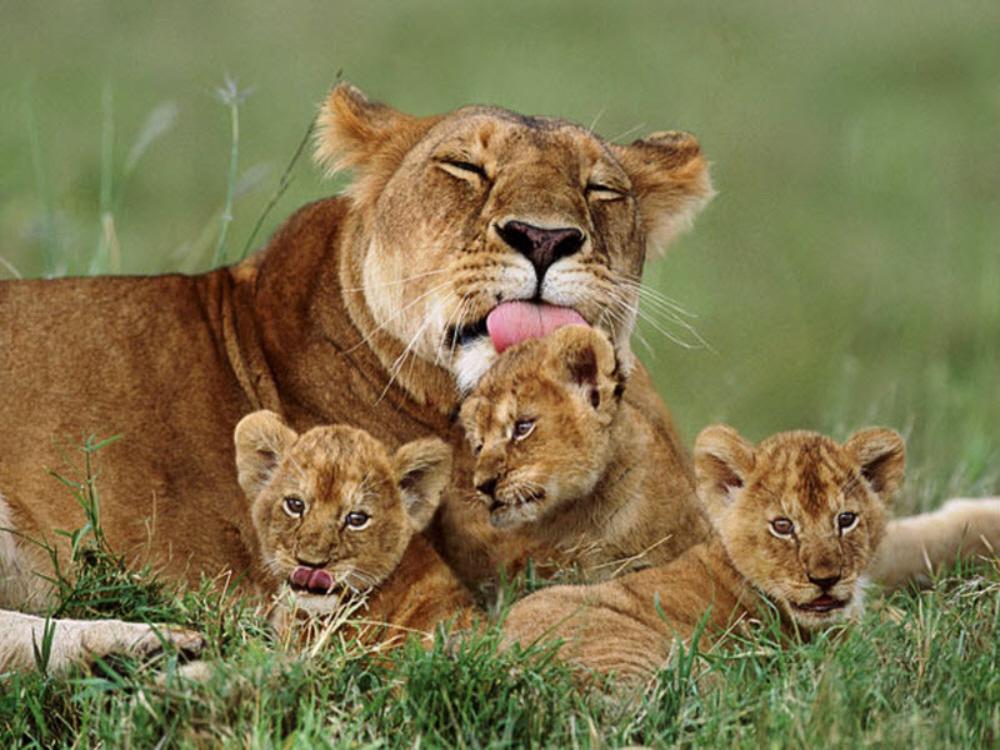 |
| well-adapted animals produce many offspring |
Inference #2: This unequal ability of individuals to survive and reproduce will lead to the accumulation of favorable traits in the population over many generations.
| Blue-footed Boobies breed for the bluest feet |
Darwin saw an important connection between natural selection and the capacity of organisms to "overproduce". He made the connection after reading an essay by economist Thoma Malthus, who argued that much of human suffering - disease, famine, war - was the inescapable consequences of the human populations's potential to increase faster than food supplies and other resources. Darwin realized that the capacity to overreproduce was a characteristic of all species. Of all the many eggs laid and young born, only a tiny fraction complete their development to leave offspring of their own.
 |
| the evolution of the modern horse by natural selection |
An organisms' heritable traits influence not only its own performance, but also how well its offspring can cope with environmental challenges. For example, an organism might be faster due to a trait that then gives it an advantage at escaping predators. That organism is more likely to survive to adulthood and reproduce to produce more organisms that run faster, and so on and so forth.
How rapidly can these changes occur? Darwin reasoned that if artificial selection can bring about dramatic change in a relatively short period of time, then natural selection should be capable of substantial modification of species over many hundreds of generations Even if the advantages of the traits are very slight, the variations will gradually accumulate and compound, and less favorable variations will diminish over time this process will increase the frequency of individuals with favorable adaptations and hence refine the match between organisms and their environment.
In the next blog entry, the direct observations of evolutionary change will be discussed.
No comments:
Post a Comment